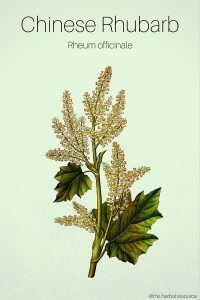It was cultivated as a medicinal plant in China as early as 2700 BC. Trade between Venice and the Orient brought Chinese rhubarb to Europe where it was used medicinally beginning in the 17th century.
The traditional use of the herb has been as a laxative, to relieve constipation and purgative.
It is also been used in folk medicine as an astringent and to treat stomach tumors. Some of the medical compounds present in the root (not the stems or leaves) of Chinese rhubarb do in fact have multiple applications in medicine.
The active chemical compounds in Chinese rhubarb are aloe-emodin, chrysophanol, emodin, physcion, rhein, and sennoside –a and –b. Chemical analysis has most often be performed on two of the three species: R. palmatum and R. officinale.
The chemical composition of R. tangutucum is less well-known – perhaps because it is less used in traditional herbalism and therefore has not attracted as much interest from scientists and drug developers.
Rhubarb’s efficacy as a broad anti-septic is also well-established both by traditional use and scientific study. The root contains a number of bactericides and viricides and some of these chemicals, such as chrysophanol and rhein, are also active against yeast (Candida).
Additionally, the root has been used to treat some of the symptoms associated with menopause.
[Read more about Chinese Rhubarb…]

Leave a Reply